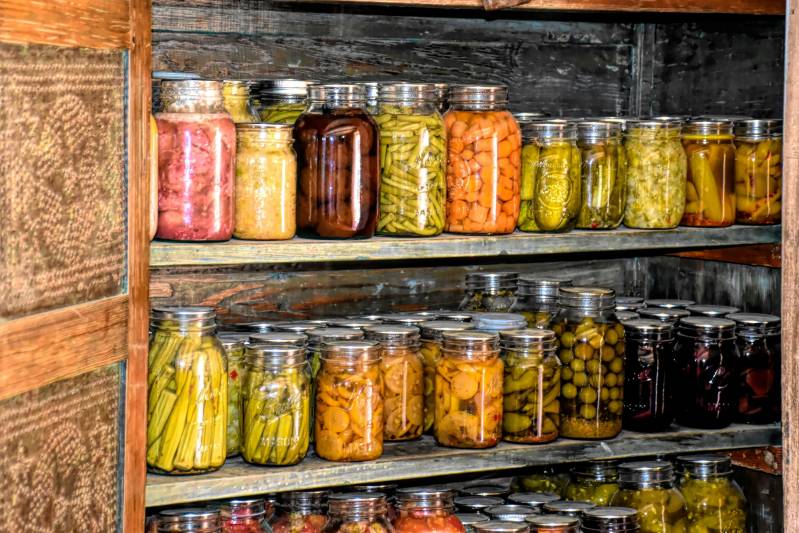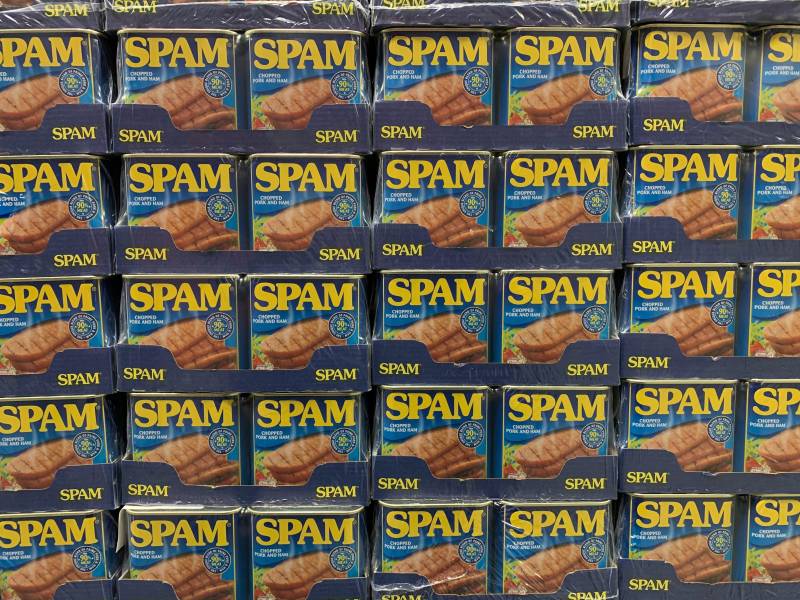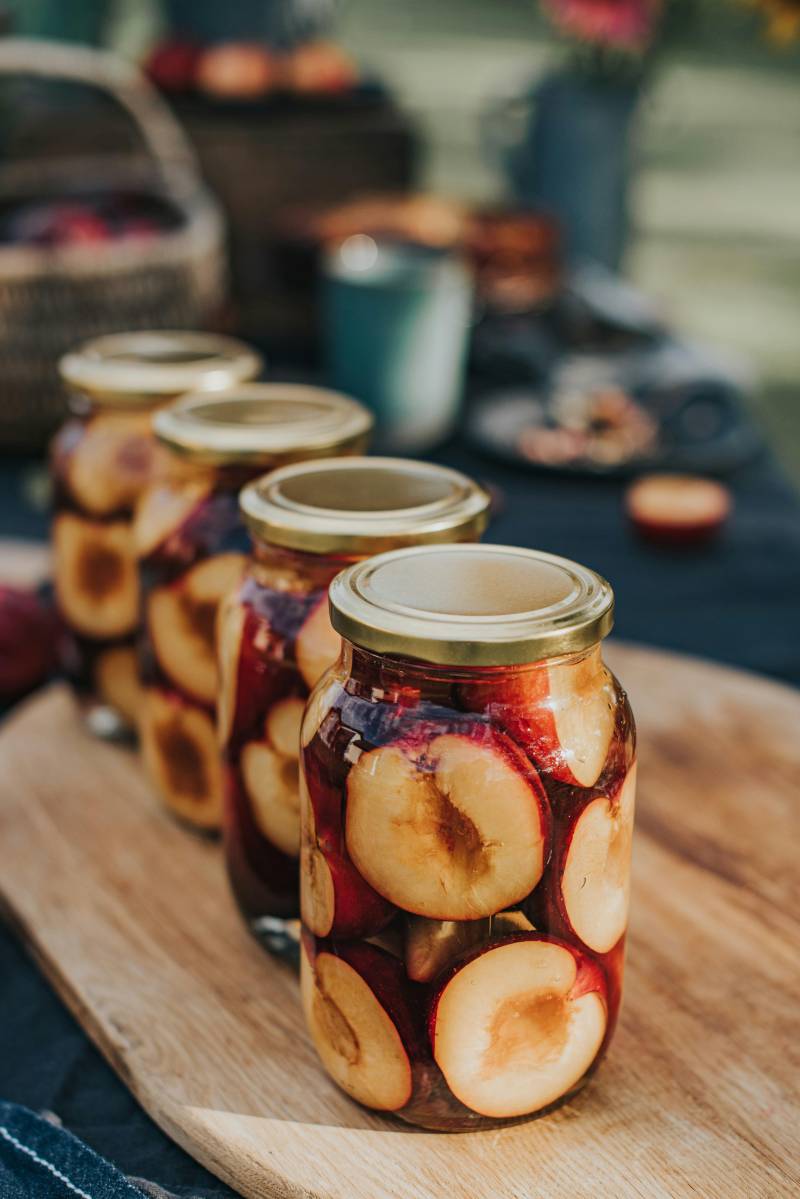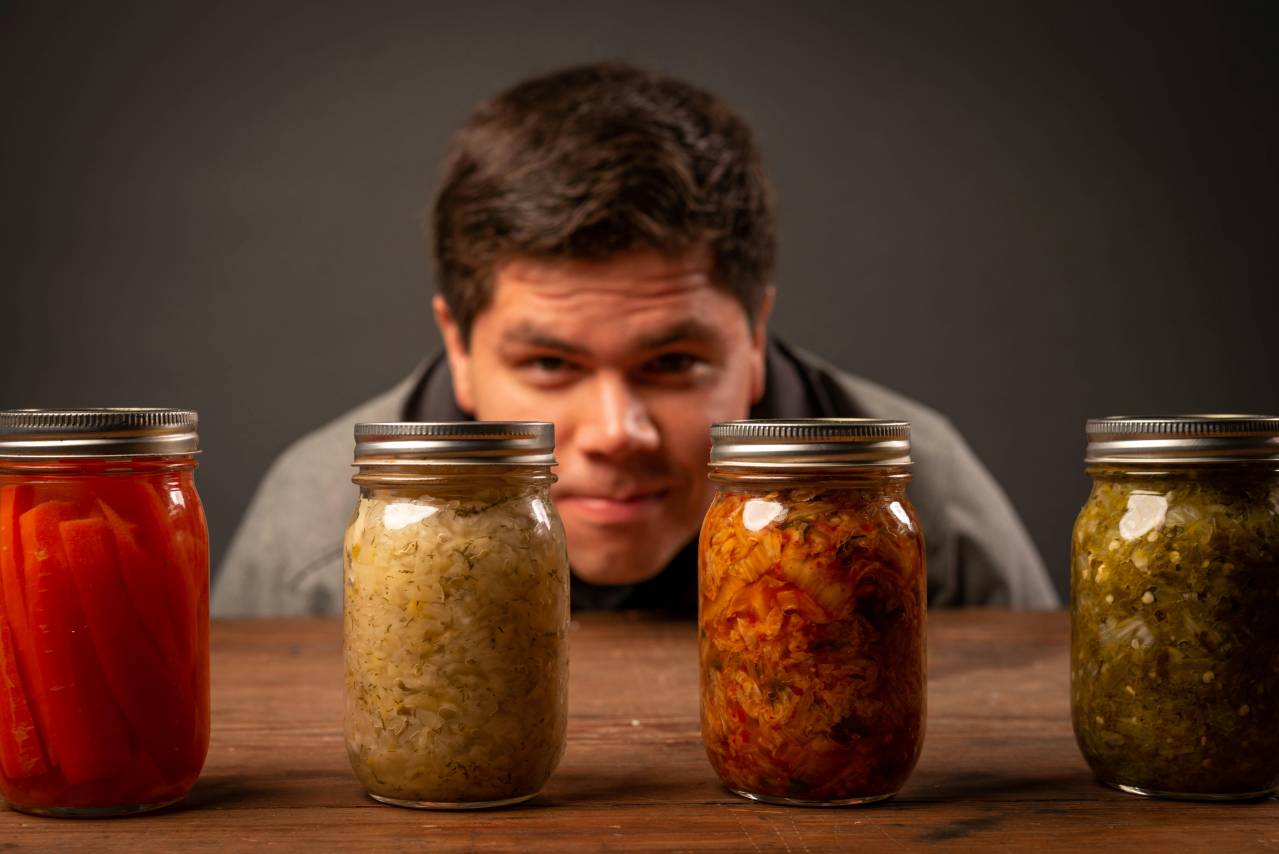Are you ready for the worst? With natural disasters, civil unrest, pandemics, and more looming on the horizon, it's important to consider how you'd prepare in case of an emergency. Everyone should have a well-stocked pantry with essential items that can help get them through any situation they may face. But what exactly should be included in your doomsday prepper food list? Let's take a look!
Do You Have A Passport?
- A complete emergency food storage plan should include shelf-stable basics like canned goods, dried staples, and comfort foods, with items carefully selected to last between six months to 20+ years depending on storage methods and food type.
- Proper storage techniques using airtight containers in temperature-controlled environments between 50-70°F are essential for maximizing food longevity and preventing spoilage.
- Beyond just food, a comprehensive emergency preparedness strategy must include water storage (one gallon per person per day), sanitation supplies, and methods for water purification.
- Special dietary needs can be accommodated through careful selection of shelf-stable alternatives like gluten-free grains, keto-friendly fats, and vegan protein sources.
- Regular rotation of stored items using a first-in-first-out system, combined with proper sanitation practices, helps maintain food safety and quality while preventing waste.
- Planning Is An Important First Step For Survival
- Doomsday Prepper Food Checklist For Emergency Survival
- Canned Foods Are A Great Long Shelf Life Option
- Dry Items Like Rice And Beans Are Long Lasting Staples
- Freeze-Dried Foods and MREs Are Good To Have Too
- Comfort Foods And Other Items To Make Food Taste Better!
- Finally, Don't Forget About Emergency Beverages
- Questions People Ask About Emergency Survival Food
- What Are The Best Strategies For Budgeting For A Survival Emergency?
- How Can I Best Store Food For Long-Term Survival?
- What Type Of Supplies Should I Have On Hand For A Survival Emergency?
- How Can I Accommodate Special Diets In Emergency Food Storage?
- How Can I Keep Things Clean And Sanitary For Doomsday Food Prep?
- Preparing Food And Supplies For An Emergency Is Essential!

Planning Is An Important First Step For Survival
Despite the challenging past few years that we've all lived through, two thirds of American's say they aren't fully prepared for an emergency and even more lack a plan for how they will deal with a disaster when it comes. While many people think of major events like the national shutdown due to the pandemic, war, or civil unrest - smaller events can be just as disruptive to your daily life ... and are far more common.
Events like snowstorms, floods, tornados, and wildfires need an emergency survival plan too.
While many Americans reach for their guns and generators when it comes to defending their home, gathering food is one of the most important parts of prepping for any kind of disaster or emergency. A well-stocked pantry with enough food to last at least several days – if not weeks – should be one of your top priorities when preparing for a potential crisis. Knowing what items you’ll need and how much of each item can help make sure you stay fed no matter what happens.
Doomsday Prepper Food Checklist For Emergency Survival
When preparing for a worst-case scenario, your food storage strategy needs to cover all essential nutritional bases while ensuring maximum shelf life and practicality. Here are the critical categories you must include in your doomsday prep food storage:
- Your protein foundation should include a mix of canned meats (tuna, chicken, salmon), dried and canned beans, nut butters, and preserved meats like beef jerky - these items provide essential proteins with shelf lives ranging from 2-10 years when properly stored.
- Build your carbohydrate base with white rice (avoiding brown rice due to shorter shelf life), pasta, oats, cornmeal, and properly stored flour with oxygen absorbers - these staples can last 5+ years and provide necessary energy during emergencies.
- Essential nutrients from fruits and vegetables are crucial - stock canned fruits in juice, canned vegetables, dried fruits, and tomato products, which not only provide vital vitamins but can last up to 2 years or more.
- Critical cooking essentials that have nearly indefinite shelf lives such as salt, honey, sugar, oils, vinegar, and basic spices - these items make basic ingredients more palatable and provide crucial flavor variety during extended emergencies.
- Dairy and alternatives must be considered by storing powdered milk, shelf-stable milk alternatives, powdered eggs, and wax-dipped hard cheese - these provide crucial calcium and protein while lasting 2-5 years when properly stored.
- Survival-specific items like MREs, freeze-dried meals, and emergency food bars, which are specifically designed for long-term storage and can last 20+ years.
- Morale-boosting comfort foods such as dark chocolate, hard candies, instant hot chocolate, and sealed cookies - while these may have shorter shelf lives of 6 months to 2 years, they're crucial for maintaining spirits during difficult times.
A well-planned doomsday food supply should balance immediate needs with long-term sustainability, ensuring your family has access to both nutrition and comfort during an emergency. This comprehensive approach emphasizes foods that have a minimum one-year shelf life, provide essential nutrients, require minimal preparation, can be eaten without heating if necessary, offer enough variety to prevent food fatigue, and accommodate different dietary needs. Remember to store everything in proper containers in a cool, dry place and implement a regular rotation schedule to maintain freshness.

Canned Foods Are A Great Long Shelf Life Option
Canned foods are among the best options when it comes to preparing for an emergency situation. Most of these items will not have an expiration date and they are also easy to stack so they take up as little room as possible in your shelter - or even in a corner of your pantry.
1. vegetables (corn, green beans, mixed vegetables, carrots, potatoes, etc.)
2. fruit (peaches, pears, pineapple, etc.)
3. soups (chicken noodle, tomato, vegetable, etc.)
4. fish (tuna, salmon, sardines, etc.)
5. beans (black beans, pinto beans, garbanzo beans, etc.)
6. meats (tuna, chicken, ham, etc.)
7. pasta (ravioli, spaghetti, macaroni and cheese, etc.)
8. juices (apple, orange, grape, etc.)
9. tomatoes (diced, crushed, sauce, etc.)
10. stews (beef, chicken, vegetable, etc.)
While it is true that most of these foods will be shelf stable for many years, you must check them periodically for damage, leaks, swelling, or any other indication that there might be something wrong with them.
Dry Items Like Rice And Beans Are Long Lasting Staples
Dried items such as rice and beans are also important as a long-lasting food staple since they can last up to a year on the shelf, sometimes a nearly infinite length of time if kept cool and dry in air-tight containers.
One thing to know, though, is that white rice will generally last longer than brown rice, so this is something to consider when putting together your prepper food list.
Freeze-Dried Foods and MREs Are Good To Have Too
Freeze-dried foods are among the longest-lasting options that you can include in your survival pantry. When properly manufactured, they can last more than 20 years in the original sealed packaging. The reason for this is that they've had more than 98% of the liquid removed from the food during the free-drying process and this means there is little chance for survival.
On the other hand, MREs - while also very long-lasting - are only designed to survive about five years. However, this is still a great option to have in your shelter since it can offer a nice variety of food options that are quick and easy to eat in an emergency situation.
Comfort Foods And Other Items To Make Food Taste Better!
Sadly, many foods that are designed to last a long time can lack flavor. For instance, fresh fruits such as a peach or apple may taste delicious but a freeze-dried one just isn't the same. While many of these items such as peanut butter (up to nine months), soy sauce and sriracha (three years), maple syrup (one year), Slim Jims (six months), packaged cookies like Chips Ahoy (six months) or Oreos (two years), or chocolate bars (2 years) can last a LONG time - you must monitor their expiration date.
However, those should all be things you consider including for your emergency food supply. No matter what the emergency situation is, from a truly doomsday scenario to simply being stuck at home for a few weeks ... you're going to want to keep spirits high and food is a great way to do that.
Finally, Don't Forget About Emergency Beverages
Most of this list of food is focused on, well ... food. However, drinks are just as important.
While this conversation typically centers around bottles of water - which can last for up to two years when properly sealed from the factory and stored in a cool, dry space - you should also consider other items too. Beyond the expiration date, most bottled water will have bacteria and algae at levels above what is considered safe. However, you can usually boil that water and kill any of that organic growth. This will make that water safe to drink ... even if it is five or ten years old.
As a result, dried items such as coffee, tea, and hot chocolate that you can make with those bottles are a great option to add to your prepper food list since you will need to boil the water before making them and the added flavor will cover up any flavor from the plastic containers.
Other beverages such as canned beer, boxed wine, and spirits may also be a good idea to have on your list since they can help you relax during stressful situations. However, while a bottle of vodka or whiskey can last virtually indefinitely, canned beer is best before six months, and boxed wine is best consumed within one year.

Questions People Ask About Emergency Survival Food
This can be a very complicated topic and so many people have additional questions about different ways that they can prepare for surviving an emergency and what foods they need to stock up on when their local grocery store might not be able to provide everything they are used to getting for a long time due to food supply issues.
What Are The Best Strategies For Budgeting For A Survival Emergency?
Start by creating a detailed inventory of essential non-perishable foods and calculating required quantities for your family size. Focus spending on versatile, nutrient-dense foods like beans, lentils, and whole grains that offer better value than pre-packaged meals. Leverage bulk purchasing, store loyalty programs, and sales to maximize your budget, while carefully checking expiration dates when buying in quantity.
How Can I Best Store Food For Long-Term Survival?
Use airtight, waterproof containers or Mylar bags with oxygen absorbers to prevent spoilage and pest infiltration. Store supplies in a temperature-controlled environment between 50-70°F, either indoors or in an insulated outdoor space. Implement a rotation system to maintain freshness, marking all containers with purchase and expiration dates.
What Type Of Supplies Should I Have On Hand For A Survival Emergency?
Stock a combination of shelf-stable foods, water (one gallon per person per day), and water purification methods like tablets or filters. In a comprehensive first aid kit, maintain medical supplies including bandages, antiseptic wipes, and basic medications. Keep sanitation essentials like soap, toilet paper, and garbage bags to maintain hygiene when normal facilities may be unavailable.
How Can I Accommodate Special Diets In Emergency Food Storage?
For gluten-free storage, focus on rice, quinoa, corn products, and certified gluten-free oats as base staples. Keto preppers should prioritize nuts, seeds, canned fish, and shelf-stable fats like coconut oil. Vegans can rely on dried legumes, nutritional yeast, and shelf-stable plant milks, while ensuring B12 supplementation is included in supplies.
How Can I Keep Things Clean And Sanitary For Doomsday Food Prep?
Create a dedicated food prep area that's easily sanitized and maintain strict inventory management to prevent contamination. Store cleaning supplies including food-grade sanitizers, disposable gloves, and cleaning cloths separate from food storage. Implement a first-in-first-out rotation system and regularly inspect storage containers for signs of pest intrusion or seal failure.
Preparing Food And Supplies For An Emergency Is Essential!
When preparing for survival, the right strategies and supplies are essential. Being prepared can help you stay safe and ensure that your family has enough food, water, and medical supplies in an emergency. Whether your goal is to survive a hurricane or other natural disaster or the collapse of society following a doomsday event, the general principles are the same - though extra considerations may be required depending on the situation being prepared for. Regardless, a doomsday prepper food list is a useful tool when planning for long-term survival. Even if you only need to keep your family fed for a week or two, it helps identify what type of items will be necessary during a more catastrophic emergency situation.
Though no one likes to imagine worst-case scenarios, taking steps now to plan ahead can give you peace of mind knowing that your family will be taken care of if disaster strikes. By following these tips and creating a comprehensive doomsday prepper food list, you’ll have everything you need to survive any kind of emergency!

